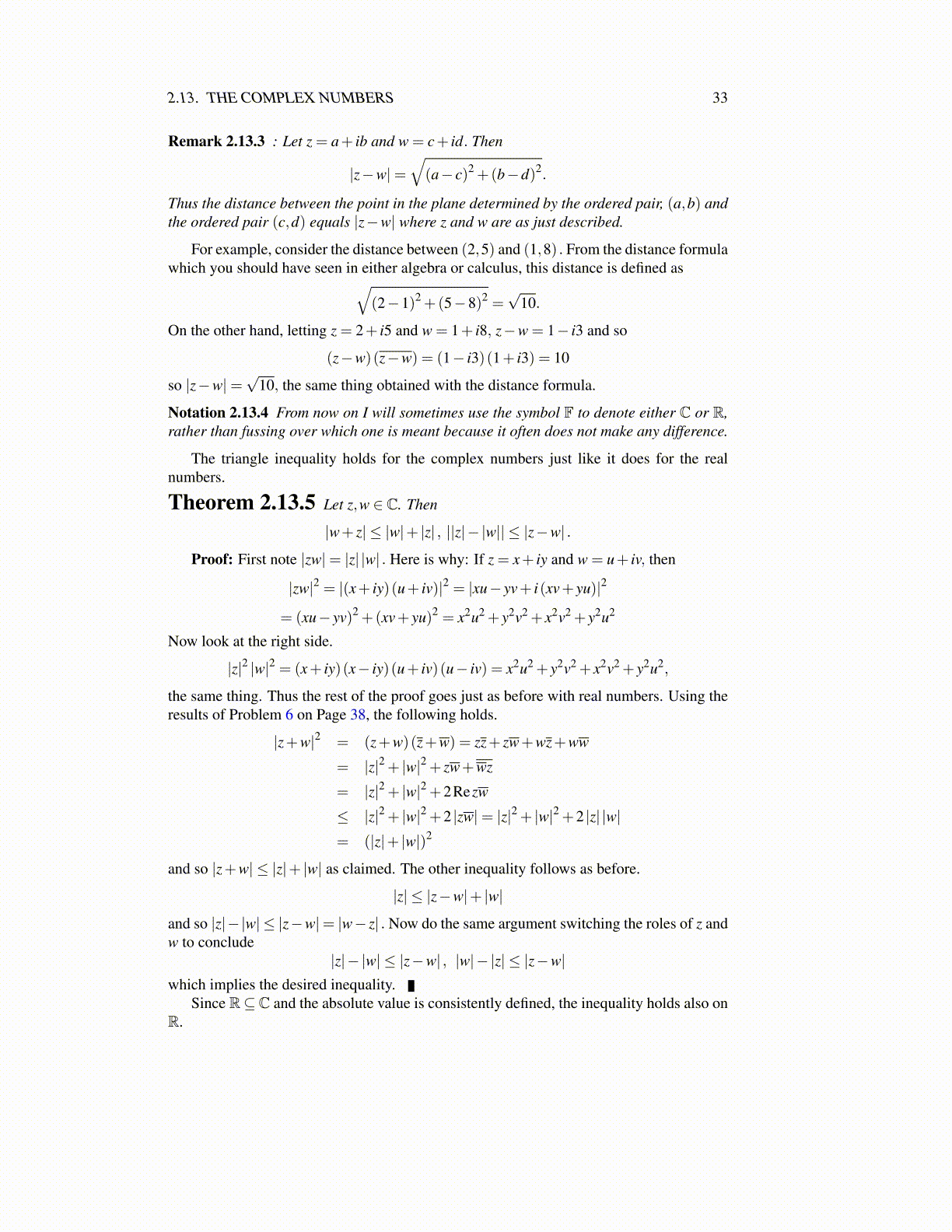
2.14. DIVIDING POLYNOMIALS 33
the same thing. Thus the rest of the proof goes just as before with real numbers. Using theresults of Problem 6 on Page 38, the following holds.
|z+w|2 = (z+w)(z+w) = zz+ zw+wz+ww
= |z|2 + |w|2 + zw+wz
= |z|2 + |w|2 +2Rezw
≤ |z|2 + |w|2 +2 |zw|= |z|2 + |w|2 +2 |z| |w|= (|z|+ |w|)2
and so |z+w| ≤ |z|+ |w| as claimed. The other inequality follows as before.
|z| ≤ |z−w|+ |w|
and so |z|−|w| ≤ |z−w|= |w− z| . Now do the same argument switching the roles of z andw to conclude
|z|− |w| ≤ |z−w| , |w|− |z| ≤ |z−w|
which implies the desired inequality.Since R⊆C and the absolute value is consistently defined, the inequality holds also on
R.
2.14 Dividing PolynomialsIt will be very important to be able to work with polynomials, especially in subjects likelinear algebra and with the technique of partial fractions. It is surprising how useful thisjunior high material will be. In this section, a polynomial is an expression. Later, theexpression will be used to define a function. These two ways of looking at a polynomialare very different.
Definition 2.14.1 A polynomial is an expression of the form
p(λ ) = anλn +an−1λ
n−1 + · · ·+a1λ +a0,
an ̸= 0 where the ai are (real or complex) numbers, more generally elements of a field ofscalars. Two polynomials are equal means that the coefficients match for each power ofλ . The degree of a polynomial is the largest power of λ . Thus the degree of the abovepolynomial is n. Addition of polynomials is defined in the usual way as is multiplication oftwo polynomials. The leading term in the above polynomial is anλ
n. The coefficient of theleading term is called the leading coefficient. It is called a monic polynomial if an = 1. Aroot of a polynomial p(λ ) is µ such that p(µ) = 0. This is also called a zero.
Note that the degree of the zero polynomial is not defined in the above. The followingis called the division algorithm. First is an important property of multiplication.
Lemma 2.14.2 If f (λ )g(λ ) = 0, then either f (λ ) = 0 or g(λ ) = 0. That is, there areno nonzero divisors of 0.
Proof: Let f (λ ) have degree n and g(λ ) degree m. If m+n= 0, it is easy to see that theconclusion holds because both polynomials are constants. Suppose the conclusion holds